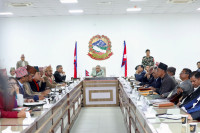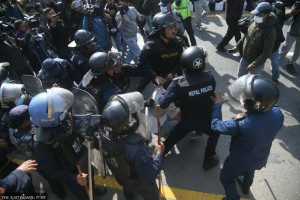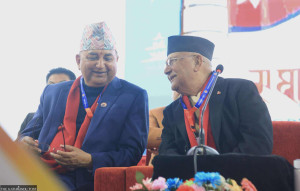National
No-man’s-land encroached in Rautahat
Both Nepali and Indian nationals living in the vicinity of the Nepal-India border in Rautahat district have encroached upon the no-man’s land.
Shiva Puri
Both Nepali and Indian nationals living in the vicinity of the Nepal-India border in Rautahat district have encroached upon the no-man’s land. Of around 32 kilometres of border area in the district, approximately 24 kilometres have been occupied in Gaur, Ishnath, Rajdevi, Paroha and Baudhimai areas. Locals have planted crops, built houses and other infrastructures, and even set up a bazaar on the no-man’s land.
The encroachment has also raised concerns from the District Administration Office. Chief District Officer Loknath Paudel said that he will take initiatives to clear the encroachment after discussing with the Indian counterparts.
“During inspection, we found that some parts of the no-man’s land have been encroached upon,” said Paudel.
According to the international standard, people cannot occupy 100 metres of land on both sides of no-man’s land. However, plots of land up to the border pillars have been cultivated by the Indian nationals in Rajdevi and Ishnath areas. A number of Nepali nationals have also started to operate liquor shops in the no-man’s land.
Grishanandan Singh, a local representative of Ishnath, said the local administration should evict encroachers from the no-man’s land.
Similarly, SP Kedar Dhakal of the District Police Office said, “The border is a highly sensitive area for both countries. A high level team, comprising representatives of both countries, should be formed to evict settlers from the no-man’s land.”
There are 15 main border pillars, 29 subsidiary and 115 minor pillars in Rautahat. According to the local administration, 17 border pillars are missing from the border area.




 7.12°C Kathmandu
7.12°C Kathmandu





.jpg&w=200&height=120)









